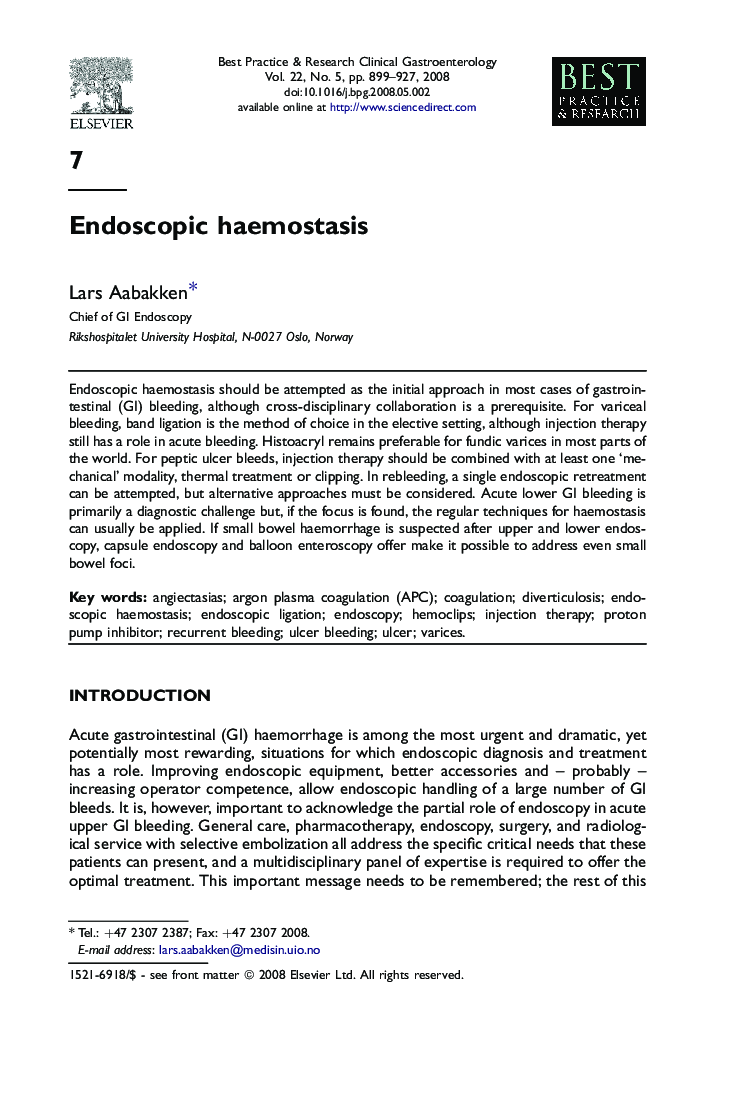| Article ID | Journal | Published Year | Pages | File Type |
|---|---|---|---|---|
| 3254590 | Best Practice & Research Clinical Gastroenterology | 2008 | 29 Pages |
Endoscopic haemostasis should be attempted as the initial approach in most cases of gastrointestinal (GI) bleeding, although cross-disciplinary collaboration is a prerequisite. For variceal bleeding, band ligation is the method of choice in the elective setting, although injection therapy still has a role in acute bleeding. Histoacryl remains preferable for fundic varices in most parts of the world. For peptic ulcer bleeds, injection therapy should be combined with at least one ‘mechanical’ modality, thermal treatment or clipping. In rebleeding, a single endoscopic retreatment can be attempted, but alternative approaches must be considered. Acute lower GI bleeding is primarily a diagnostic challenge but, if the focus is found, the regular techniques for haemostasis can usually be applied. If small bowel haemorrhage is suspected after upper and lower endoscopy, capsule endoscopy and balloon enteroscopy offer make it possible to address even small bowel foci.
